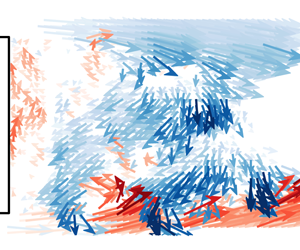Article contents
Mechanics of bluff body drag reduction during transient near-wake reversals
Published online by Cambridge University Press: 04 May 2020
Abstract

A combination of passive and active methods is used to manipulate the symmetry of the turbulent wake of an Ahmed body. Dedicated experiments to study the wake reversals occurring between symmetry-breaking states are performed. We show how transient symmetric states explored during the reversals differ from static symmetry-breaking states in the flow organization they induce. In asymmetric states, a strong interaction and coupling between the recirculating flow from one side and the shear layer from opposite side triggers shear-layer instabilities and their amplification. The resulting large-scale flow engulfment in the recirculation region increases the recirculation intensity and thus increases base drag. By contrast, during the wake reversals the disorganization of the recirculating flow leads to a transient symmetric state with prevented shear-layer interaction and triggering mechanism with a concomitant drag reduction of  ${\sim}8\,\%$ compared to symmetry-breaking states. Finally, recent experimental results for unbalanced wakes and methodologies addressing the control of wake asymmetries for drag reduction are discussed and interpreted based on the present findings. This leads us to provide new insights in control methods for wake asymmetries.
${\sim}8\,\%$ compared to symmetry-breaking states. Finally, recent experimental results for unbalanced wakes and methodologies addressing the control of wake asymmetries for drag reduction are discussed and interpreted based on the present findings. This leads us to provide new insights in control methods for wake asymmetries.
JFM classification
- Type
- JFM Papers
- Information
- Copyright
- © The Author(s), 2020. Published by Cambridge University Press
References
Haffner et al. supplementary movie 1
Coupled wake/base pressure dynamics of a natural wake reversal. Left : streamwise velocity field ux in the plane z/H = 0.67. The recirculation region is indicated inside the white contour ux = 0 and the red cross denotes the position of the center of wake momentum deficit. Right : evolution of the lateral position of the base CoP yb with time in convection time units. The red dot indicates the current timing.
Haffner et al. supplementary movie 2
Hydrogen bubble flow visualization of the Ahmed body wake at ReH = 9000 in the vertical plane of symmetry y/H = 0. The recirculating flow coming from the bottom shear-layer is triggering the top shear-layer near the base to form large-scale structures of characteristic time-scale StH = 1.
- 57
- Cited by


